Video: Meet the last of Cork's lighthouse keepers
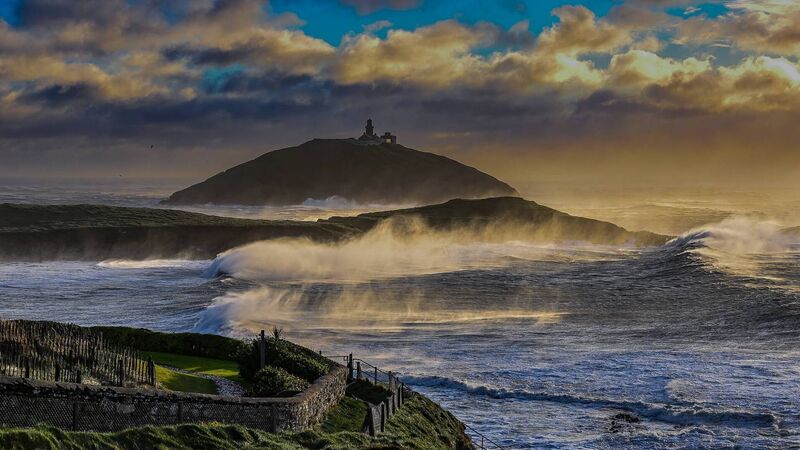
Ballycotton Lighthouse in County Cork. Picture: Mark Leo
A SAYING among lighthouse keepers goes something like, “there are hard stations and tough stations”.
In Cork terms, a hard station would be the island lighthouses of the Bull Rock and Fastnet, while a tough station is the likes of Galley Head or Roches Point; coastal lighthouses.
After serving a good deal of time at a hard station, a light keeper would eventually be moved to a tough station.
The original job was a month on and a month off. It was multi-faceted and required a keeper to be resourceful and be a jack of all trades.
Since the full automation of lighthouses in the 1990s (there was a partial automation in the 1970s) many of the lightkeepers stayed on in their role on a part-time basis. Some of whom we’ll meet in this series. This week, we’ll look at three of the Cork lighthouses.

Lighthouse: Mizen Head, Co Cork
Year built: 1907
Automated since: 1979
Signature Night signal: 1 white flash every 4 seconds
Signature day colour: White
Current attendant: Geoff McCarthy
Geoff McCarthy began his working life as a secondary school in Yorkshire. He enjoyed teaching but the staffroom politics had him pondering what might be next in his career.
It was 1975, and around that same time his uncle, who was a lightkeeper at Ballycotton, told him about a recruitment drive at Irish Lights.
Geoff had grown up in southern Yorkshire’s coal mining belt to Co Kerry parents, so had spent most summers in Ireland. Without much thought, he found himself living in Ireland full time and training as a lighthouse keeper.
“I came to Ireland to join the Lighthouses specifically,” he says. “I think we were the third tranche of trainees that went through the lighthouse depot in Dún Laoghaire.
“It was a six week training course, covering everything from radiotelephony to crockery, engine maintenance, morse code, nuts and splices, boat landings, helicopter drills... there was a plethora of skills we needed under our belts before we went out as Assistant Lighthouse Keepers.”
Geoff served on most of the lighthouses all around the country. Each was unique and had different ways of doing things.
“It was like serving an apprenticeship, you went from pillar to post, because you had everything from paraffin power to nuclear power. Every lighthouse had its own equipment, so it was a matter of learning the ropes at each station. Some had diesel power, some had fog signals, some had state of the art generators. There was lots of different equipment to pick up on. No-one ever threw anything away. It was sacrilege. Rather than be a foot short of any material, they’d send down an extra mile just in case,” Geoff recalls.
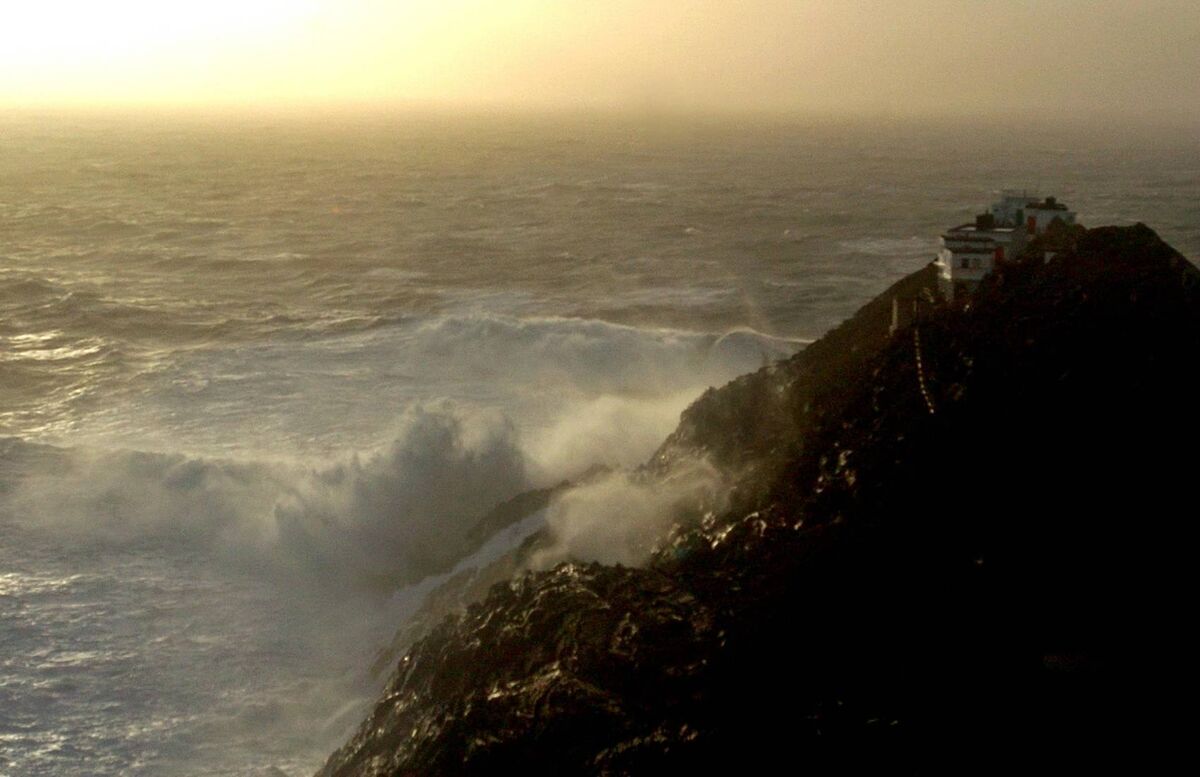
He says he joined the Irish Lights at a good time.
“I joined around the time that helicopter rescues were coming in. You would often hear stories of keepers being stuck on the Fastnet or somewhere for 96 days because of bad weather.
"In my 18 years as a lighthouse keeper, I was never one day overdue, anywhere.”
Between 1985 and 1989, Geoff was stationed full time on The Bull Rock and because he was living in Schull, his next lighthouse to maintain was Mizen Head. He worked there full time until it became fully automated in 1993.
The day after automation kicked in, he began his part-time role as a lighthouse attendant and has been there ever since.
The Mizen was originally a fog signal station when it was built in 1907 and did not become a full lighthouse in 1959.
“These days, the input is minimal from me. I go up there every few days and make sure everything is working. Most of it is automated now."
Geoff and the others featured in this series are the last generation of lighthouse attendants to have had direct experience of working as a lighthouse keepers, before partial and subsequently, full automation kicked in.
This series will offer a glimpse into the history and inner workings of these buildings.
Lighthouse: Old Head of Kinsale, Co Cork
Year built: 1851
Automated since: 1979
Range of Light: 20 nautical miles
Character Night Signal: Two flashes every 10 seconds
Character day colour: Black with two white bands.
Current attendant: Alan Boyers.
The Boyers are the only family in Cork to live in a lighthouse.
Alan Boyers, like his father before him, is a former lighthouse keeper. The nature of the job meant moving around to lighthouses darted all around the country, the majority of them being along the Cork coast.
He and his family settled at the Old Head in 1992. They arrived with four children and had four since moving there. Today most of his children have flown the nest, bar one.
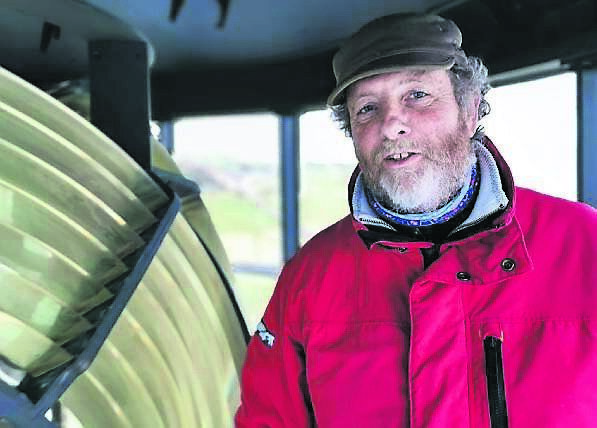
I chat to Alan next to the Old Head’s five ton rotating bulb, as he talks about what it was like in those early years, and observes some of the changes he has noticed in lighthouse culture recently.
“When I was a child living at lighthouses, it seemed to be more of a secretive organisation.
"It was very hard to get a job in the organisation unless you had family in it. Very few came into it.
“In Canada they stopped a lot of automation now. They wanted 50 lighthouses kept. The reason being, if everything failed, they’d have a human to contact. They still recruit lighthouse keepers there.
“In Ireland, people are looking at them as more of a tourist attraction. Whereas myself and the likes of Ger (Butler from Galley Head) think of the days when we used to sit up doing the watches, trying to help people at sea, keeping radio watch.
“There was men out there for hundred of years manning these lighthouses.”
While being the only family to live in a lighthouse in the area, his own children were always made to feel welcome within the Kinsale community.
“I think teachers and that were always interested in meeting us, to see what the parents of lighthouse children were like,” Alan laughs.
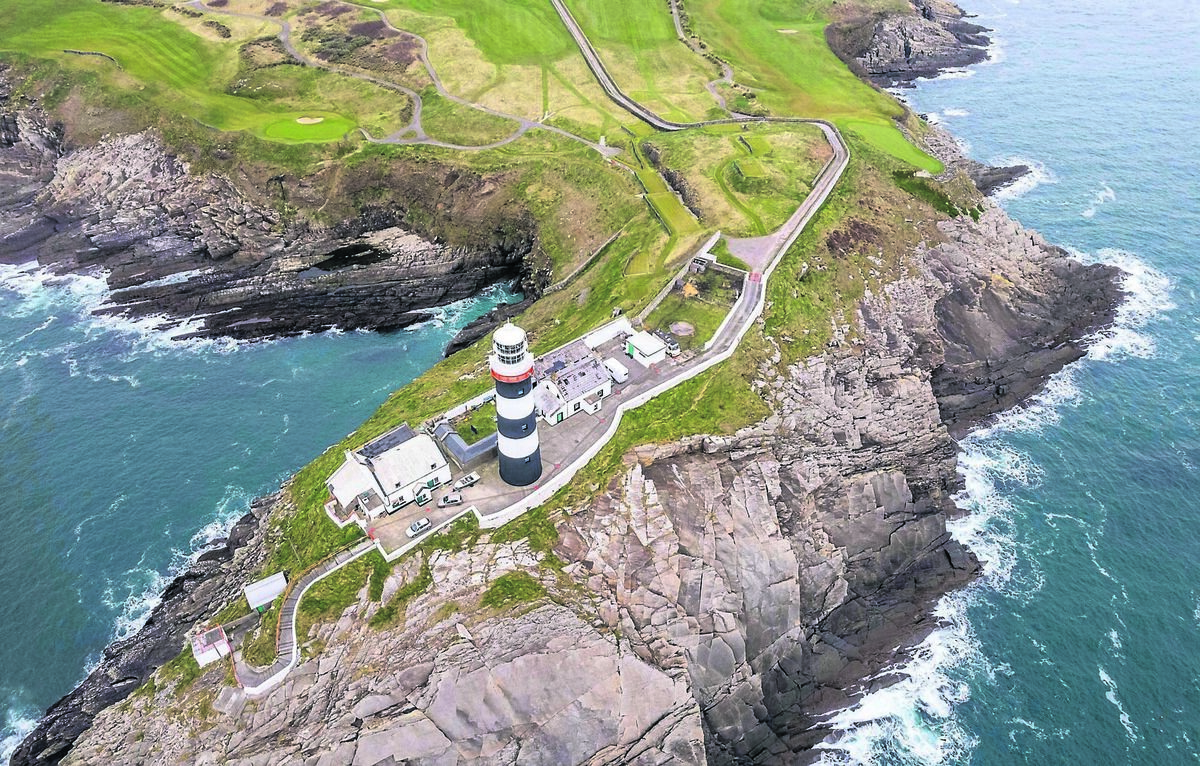
An old right-of-way law means lighthouses cannot easily be accessed by the public.
“We open the lighthouse four days a year, two days in May and two days in September,” says Alan. “
People can come and see the golf course from the lighthouse and proceeds go to the local charities and the Lusitania Museum is near here.”
The Old Head of Kinsale Lighthouse is not directly attached to The Great Lighthouses of Ireland group, which means there is little chance there will be a visitor centre there, in the near future at least.
“I’ve no problem showing people around the lighthouse, and giving people a bit of the history, because it’s been kind of lost,” says Alan.
“There’s not many of us left. But this one is kind of caught with the right of way. The right of way is for lighthouse maintenance, only. And this was stipulated in 1853.”
The house where Alan lives on site was built in 1855. Right outside his door is the lighthouse tower and its rotating light enters every room in the house.
“I have a full view of the light from my bedroom window and front door. Now, they say they don’t need me here for that (to maintain the light), that everything is automated. But at the same time, I’m still the human presence here. I get regular calls to double check that everything is working.”
Is it easy to get to sleep with the bulb shining into your bedroom?
“I’d say at this stage it soothes me to sleep. Once I can see that light shining out to sea. I’m a happy boy,” Alan laughs.
In October, 2021, the old head was given a fresh paint job by Irish Lights.
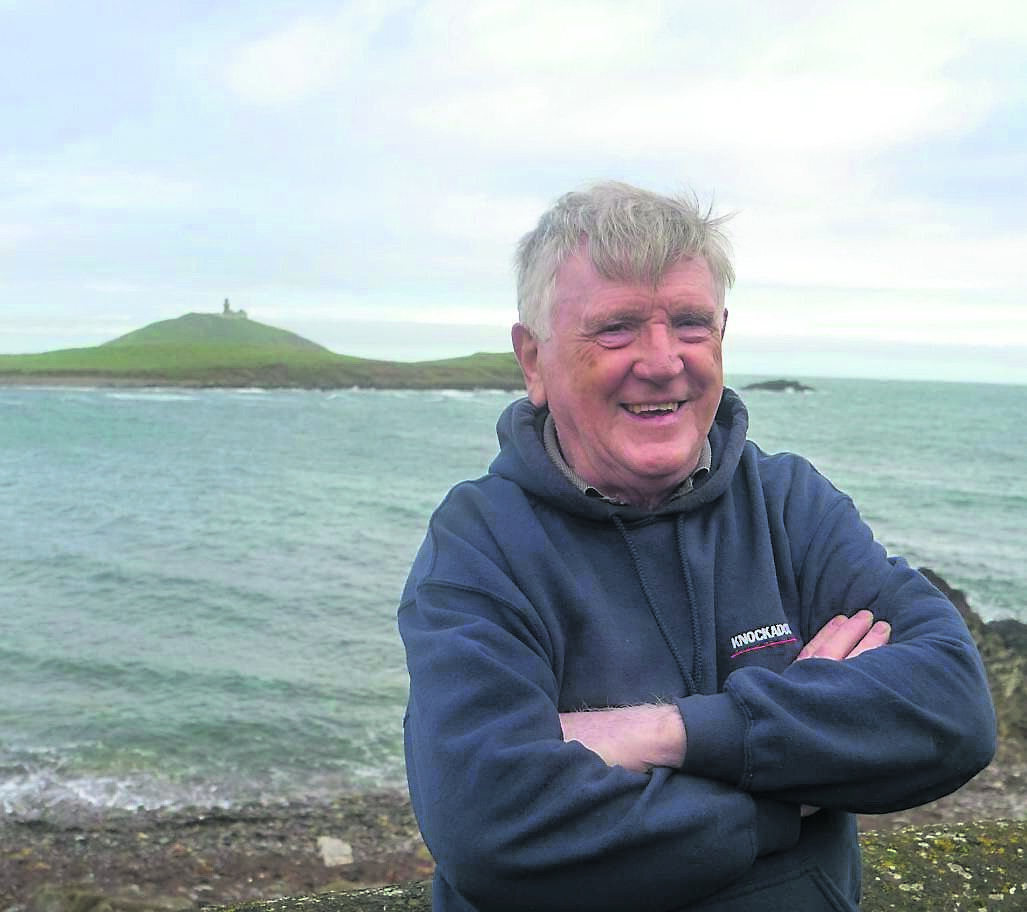
Name of lighthouse: Ballycotton.
Year built: 1851.
Current attendant: Eddie Fitzgerald.
Character Light Signal: 1 white flash every 10 seconds.
Day Character: Black Tower.
Range of light: 21 nautical miles.
Open to the public: April to September.
A spin to East Cork is always worth a stop by Ballycotton, and the lighthouse there is synonymous with the village itself.
Perched on a jagged island rock, the black paint of its day signal is often lit by the parting clouds as Sunday strollers take their selfies with the 171-year-old structure in the backdrop.
Ballycotton Lighthouse tour guide, Eddie Fitzgerald, is a former lighthouse keeper, but most people will probably know him as a member of the popular showband Gina, Dale Haze and The Champions. He took on the role as tour guide at Ballycotton when it opened to the public eight years ago.
We chatted at the top of a blustery Ballycotton Pier, while looking across to the lighthouse. Unfortunately, sea conditions were not ideal to take me across on the day we met.
“Originally, I worked out at the lighthouse as a lightkeeper in the ’60s but today I’m a guide there. It’s a fantastic amenity to have in our area,” Eddie says
His career as a lightkeeper was relatively short-lived, but he still has an affinity for his old job and former colleagues.
“I joined Irish Lights in 1966 and came out of it in ’69, But I enjoyed it very much, I’d a great time, training up at The Bailey Lighthouse in Dublin.
“And because I was from here, I spent a lot of time on that lighthouse”, he says pointing across to Ballycotton Island.
“Roll on down through the years, and eight years ago, it was decided to open it up to the public and take people out there. I was happy to come on board, and I’ve been a guide there since,” Eddie explains.
He left his job at Irish Lights to pursue a career as an electrician but along the way, found himself becoming a guitarist in a well-known Irish pop showband group.
“I was lucky enough to be a member of Gina, Dale Haze and The Champions. We were very successful, we did very well. That’s what I did for most of my time when I left Irish Lights up until ‘92, then I went back to my electrical trade after that.”

Local woman and founder of the Ballymaloe cookery school, Yasmin Hyde, had the idea to open the lighthouse to the public. It was then taken over in recent years by a local enterprise, Ballycotton Sea Adventures.
“Last year, incidentally, was our most successful year,” says Eddie.
“I suppose due to Covid and the staycations and things. We had mainly Irish tourists. We carried more than 5,000 people across to the island last summer,” Eddie says.
Since the weather isn’t conducive to a trip across for me, he describes what people can expect to see on a day when travel is possible.
“Well from our perspective, what makes us a bit different is there’s a lot of lighthouses open to the public but they’re all on headlands, we’re one of the few that is on an island, so you have to get a boat from the pier to the island, so that’s an attraction.
“You get off at the landing, and then there’s a steep walk up to the steps to the lighthouse, then you walk around the compound, and we explain the history from when it was built up until now.
“People are quite amazed when they get to the top of the landing of the lighthouse, when they look back at the mainland and they can see as far east as the Mine Head lighthouse in Waterford and west as far as the old head of Kinsale, the mouth of Cork Harbour, Roberts Cove, Cable Island on the other side, and all the coast in between.”
He tells me that every year there’s a bit of a reunion with the other former lightkeepers, where they meet up and have a night out.
******
Most of the Irish lighthouses use a Fresnel lens that rotates on a bath of mercury. The system has been in place since around 1910.
The Galley Head Lighthouse lens weighs two ton, the old Kinsale lens weighs 5-ton, Roches Points Bulb is in a fixed position and does not rotate and does not require any mercury. Its lens weighs about a half ton.
Ballycotton has a bulb similar in size to that of a car headlight, its rotating lens is very light in weight; about 11m kilos.
The Mizen head uses a buoy lantern that has been in place since 1959 and its sole purpose is to illuminate the headland.
Due to the toxicity of Mercury, a modernised bearing system will be phased in for rotating lenses.
NEXT WEEK: In part two of our mini-series, we visit Galley Head and Roches Point.



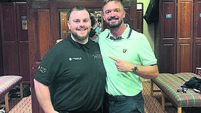
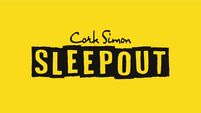


 App?
App?


